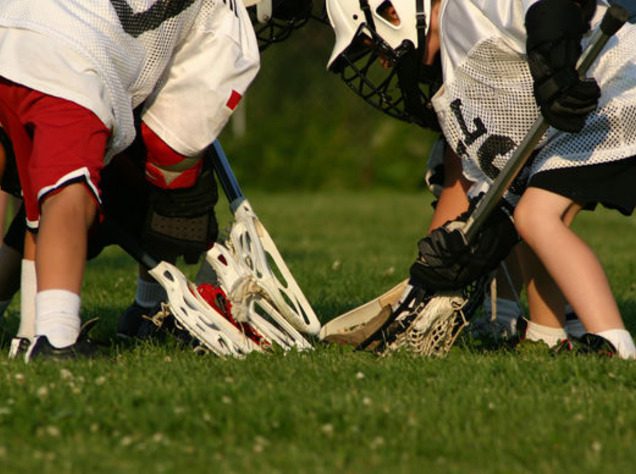Although lacrosse is lightning quick, there’s tons and tons of subtle nuances and mind games to be played out on the field. For young players of the sport, it’s easy to get zoned in on shooting, scoring, and the physical nature of the game, but one equally important, but often forgotten aspect of lacrosse is possession. This strategy and ideal can be applied across almost every sport: if you have the ball, your opponent can’t possibly score. Thusly, the teams that own the most possession throughout a full game are generally in the best situation for success. Great, so now how do we get possession in lacrosse? Aside from physical play like scooping up ground balls or body-checking an opponent, there aren’t many options other than just hoping the other team messes up. However, there is one sure-fire way to help your team keep possession and it comes from a simple, but effective face-off strategy. To the untrained eye, lacrosse face-offs might appear as if it’s a hodgepodge, free-for-all, but there are three moves any aspiring athlete needs to know before getting in that circle. Quoted from our full Training Center article on the subject, we take a closer look at this underrated aspect of the game:
To many, the face-off is often described as a complicated form of rock, paper, scissors. The most common moves are the clamp, the jam, and the rake. The clamp involves quickly rolling your wrists over so that the back of the head clamps down on the ball before your opponent’s does. That way, you can send it out to one of your wingmen or flick it into open space and pick up the ground ball. However, the clamp is often neutralized by the jam, a move in which the lacrosse head and shaft is quickly punched over the ball entirely in order to block your opponent out from any access. Remember, with the jam, you’re not trying to secure possession of the ball immediately so much as you’re trying to take the opposition out of position. After the head of your stick is completely front of the ball and against your opponent’s stick, you can push it behind you open space. Then, finally, you’ve got the rake — a move that often beats the jam. This is because the face-off man moves his stick under the jam before it can disable him. In the time it takes for the opposition to bring his stick up and over the ball, you’ll need to strike, so a quick reaction is key. As his stick is in the air, simply punch the ball out from the circle and chase after it. To bring it full circle, the rake usually loses to the clamp because it takes more time to flatten the stick and swipe than it does just to simply trap it. Now, you can see how much of a back-and-forth, cat-and-mouse game the face-off can be. To win face-offs, a player has to read his opponent correctly. Which grip does he chose for each move? How does he position his body? Where does he put the ball when he wins? The ability to read opponents comes with practice and in-game experience. Each ref blows the whistle at a different frequency for each face-off, so getting in tune with the timing element is huge. At the end of the day, quickness reigns over all, so practice on your rapid reaction skills.
As for drills, practice makes perfect and the best thing you can do is run through the steps and sequences as much as possible. We outline a few ideas in the full article, which can be found here, but these drills can include going 1-on-1 against an opponent, coach, or parent, trying to constantly outsmart them; or, just try lining up on your own and going through the movements rapid-fire and without pause. Remember, the quicker you react, the better! One last time — the full article is here, but if you’re feeling like you need a little more attention, head to http://www.coachup.com, enter lacrosse, and find your perfect coach! Good luck in your training — spring season will be here before you know it!
How useful was this post?
Click on a star to rate it!
Average rating 0 / 5. Vote count: 0
No votes so far! Be the first to rate this post.



